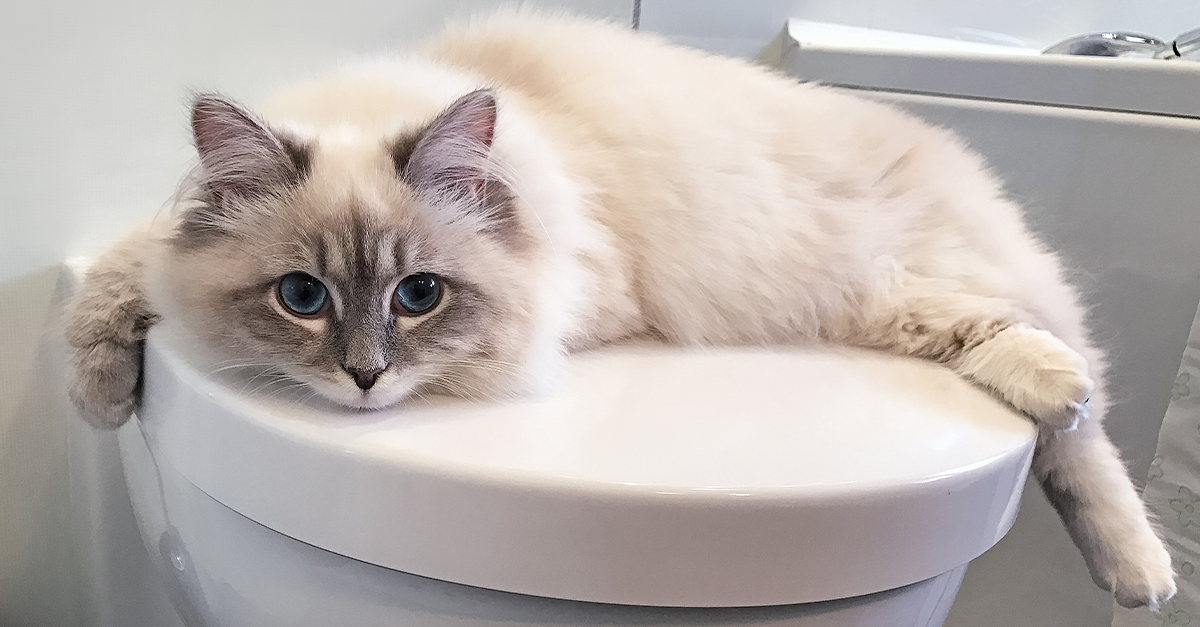Avoid Clogs and Damage: Don't Flush Cat Poop Down Your Toilet - Expert Insights
Avoid Clogs and Damage: Don't Flush Cat Poop Down Your Toilet - Expert Insights
Blog Article
This great article following next involving Don’t flush cat feces down the toilet is amazingly intriguing. You should read it.

Intro
As cat proprietors, it's essential to bear in mind how we take care of our feline close friends' waste. While it may appear convenient to purge cat poop down the bathroom, this technique can have harmful effects for both the atmosphere and human wellness.
Environmental Impact
Purging cat poop presents harmful microorganisms and bloodsuckers into the water system, posing a considerable threat to aquatic environments. These impurities can negatively influence marine life and compromise water high quality.
Wellness Risks
In addition to environmental issues, flushing feline waste can also posture wellness dangers to human beings. Feline feces might consist of Toxoplasma gondii, a parasite that can trigger toxoplasmosis-- a potentially serious illness, specifically for pregnant females and people with weakened immune systems.
Alternatives to Flushing
Thankfully, there are more secure and more responsible ways to take care of feline poop. Take into consideration the complying with choices:
1. Scoop and Dispose in Trash
One of the most typical approach of dealing with pet cat poop is to scoop it into a naturally degradable bag and toss it in the trash. Make sure to make use of a devoted trash scoop and take care of the waste quickly.
2. Usage Biodegradable Litter
Go with biodegradable feline clutter made from products such as corn or wheat. These clutters are eco-friendly and can be securely thrown away in the garbage.
3. Bury in the Yard
If you have a backyard, consider burying cat waste in a designated area away from veggie yards and water resources. Make certain to dig deep adequate to prevent contamination of groundwater.
4. Install a Pet Waste Disposal System
Buy a pet dog garbage disposal system particularly developed for feline waste. These systems utilize enzymes to break down the waste, minimizing odor and environmental impact.
Conclusion
Liable pet ownership expands past giving food and sanctuary-- it likewise involves proper waste monitoring. By avoiding flushing cat poop down the toilet and opting for different disposal approaches, we can lessen our environmental footprint and shield human health and wellness.
Why Can’t I Flush Cat Poop?
It Spreads a Parasite
Cats are frequently infected with a parasite called toxoplasma gondii. The parasite causes an infection called toxoplasmosis. It is usually harmless to cats. The parasite only uses cat poop as a host for its eggs. Otherwise, the cat’s immune system usually keeps the infection at low enough levels to maintain its own health. But it does not stop the develop of eggs. These eggs are tiny and surprisingly tough. They may survive for a year before they begin to grow. But that’s the problem.
Our wastewater system is not designed to deal with toxoplasmosis eggs. Instead, most eggs will flush from your toilet into sewers and wastewater management plants. After the sewage is treated for many other harmful things in it, it is typically released into local rivers, lakes, or oceans. Here, the toxoplasmosis eggs can find new hosts, including starfish, crabs, otters, and many other wildlife. For many, this is a significant risk to their health. Toxoplasmosis can also end up infecting water sources that are important for agriculture, which means our deer, pigs, and sheep can get infected too.
Is There Risk to Humans?
There can be a risk to human life from flushing cat poop down the toilet. If you do so, the parasites from your cat’s poop can end up in shellfish, game animals, or livestock. If this meat is then served raw or undercooked, the people who eat it can get sick.
In fact, according to the CDC, 40 million people in the United States are infected with toxoplasma gondii. They get it from exposure to infected seafood, or from some kind of cat poop contamination, like drinking from a stream that is contaminated or touching anything that has come into contact with cat poop. That includes just cleaning a cat litter box.
Most people who get infected with these parasites will not develop any symptoms. However, for pregnant women or for those with compromised immune systems, the parasite can cause severe health problems.
How to Handle Cat Poop
The best way to handle cat poop is actually to clean the box more often. The eggs that the parasite sheds will not become active until one to five days after the cat poops. That means that if you clean daily, you’re much less likely to come into direct contact with infectious eggs.
That said, always dispose of cat poop in the garbage and not down the toilet. Wash your hands before and after you clean the litter box, and bring the bag of poop right outside to your garbage bins.
https://trenchlesssolutionsusa.com/why-cant-i-flush-cat-poop/

We hope you enjoyed reading our piece about How to Dispose of Cat Poop and Litter Without Plastic Bags. Thanks a ton for taking the time to read through our post. Do you know somebody else who is in to How to Dispose of Cat Poop and Litter Without Plastic Bags? Take a moment to promote it. Many thanks for going through it.
Click Here Report this page